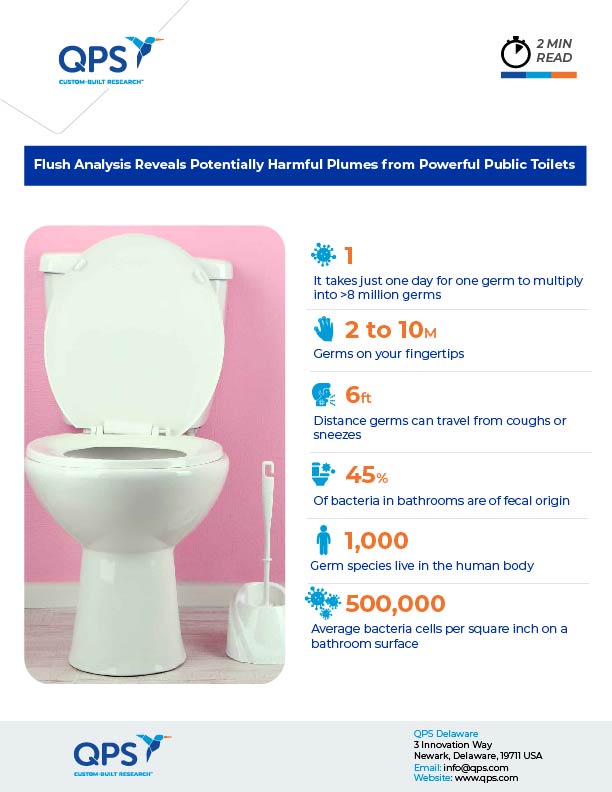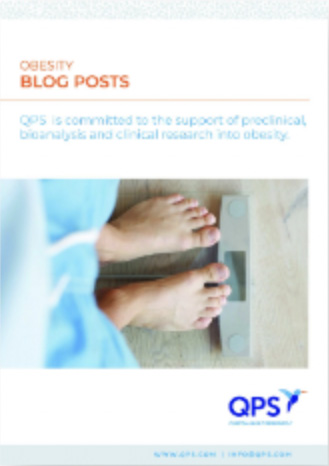Flushing a toilet sends waste and water down, but do you ever wonder about what is sprayed up into the air at the same time? Research using a pulsing laser beam, a lidless toilet, and a camera positioned to document the aerosol plume has provided new insight into the potential pathogens you may encounter in public restrooms.
Recording a Shocking Plume
Civil and environmental engineers at the University of Colorado, Boulder, led by John Crimaldi, conducted the research, published in Scientific Reports. They set up a laser to project green light over the toilet bowl, which contained only clean water. The resulting cloud of particles that erupted upon flushing scattered the light and manifested as green dots. A camera recorded the results. The researchers were shocked by the outcome. “We saw this incredibly energetic jet of particles shooting up towards the ceiling,” Crimaldi reported to the online publication Inverse.
They reported that the plume sprayed up and back toward the wall behind the toilet. The area with the highest concentration of particles, and therefore the most likely to contain pathogens, rose about a foot above the toilet bowl within 5.5 seconds. Within 8 seconds of a flush, particles sprayed up to approximately 5 feet.
Public Restrooms and Public Health
The new research focuses on the types of flushing mechanisms used in toilets in public restrooms, which empty the toilet and replace the water without a tank. It follows and builds on other investigations into the potential for tiny droplets to carry particles containing urine, feces, and pathogens into the air over lidless toilets. For many flushes after the removal of feces, the water in the bowl can contain high levels of pathogens. Detailed investigation of the plumes may help lead to measures that can reduce the transmission of aerosol-spread infections.
Flushing Out the Details
The new research sought to clarify the physics of the aerosol plumes and determine how far the particles can travel from the toilet. The team was able to count and estimate the speed of emerging airborne particles using 5-nanosecond-long laser pulses recurring about every 100 milliseconds. They analyzed the changing shape of the plume over time by taking pictures every few seconds, post-flush. The results allowed the researchers to track the particles’ paths and velocities. In addition to the heights achieved, they found that the aerosols continued to spread over time.
Closing the Lid on Toilet Plumes?
Could lids on public toilets be the answer? While a closed lid does reduce a toilet’s plume significantly, it also adds to the risk of fecal-oral transmission by creating another surface that users would have to touch. However, these findings could lead to changes to improve public health and safety. Possibilities include improved toilet design, better ventilation above toilets, UV disinfection, and electrostatic precipitators that eliminate particles with electricity.
Did you enjoy this blog post? Check out our other blog posts as well as related topics on our Webinar page.
QPS is a GLP- and GCP-compliant contract research organization (CRO) delivering the highest grade of discovery, preclinical and clinical drug research development services. Since 1995, it has grown from a tiny bioanalysis shop to a full-service CRO with 1,100+ employees in the U.S., Europe and Asia. Today, QPS offers expanded pharmaceutical contract R&D services with special expertise in neuropharmacology, DMPK, toxicology, bioanalysis, translational medicine and clinical development. An award-winning leader focused on bioanalytics and clinical trials, QPS is known for proven quality standards, technical expertise, a flexible approach to research, client satisfaction and turnkey laboratories and facilities. Through continual enhancements in capacities and resources, QPS stands tall in its commitment to delivering superior quality, skilled performance and trusted service to its valued customers. For more information, visit www.qps.com or email info@qps.com.





